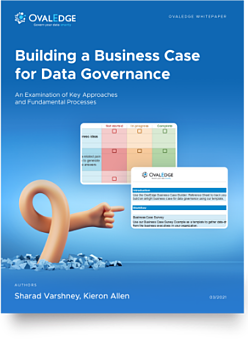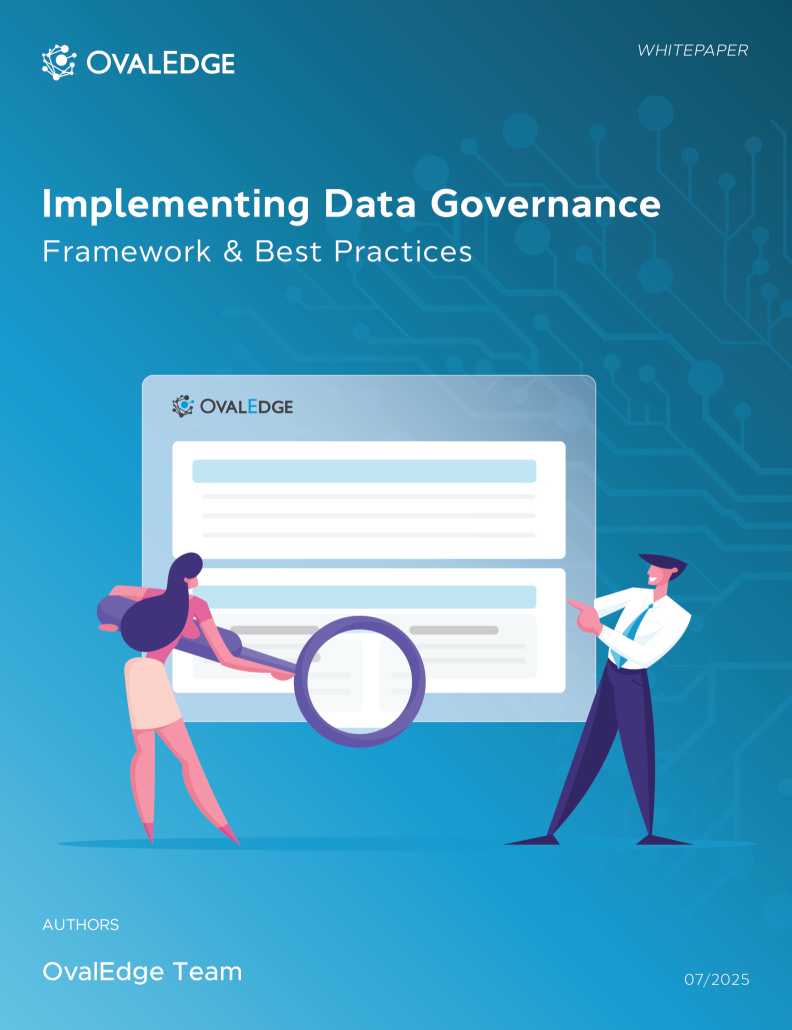Table of Contents
7 Common Data Quality Pain Points for CROs: Examples & Fixes
Data quality issues can severely impact a Chief Risk Officer’s (CRO’s) ability to build accurate, compliant, and data-driven risk models. In this article, we’ll explore the most common data quality issues, real-world data quality issues examples, and actionable data quality issues and solutions tailored for risk management professionals in banking and finance.
Why Data Quality Matters for CROs
Chief Risk Officers often encounter data quality pain points that, if left unaddressed, can undermine the effectiveness of their role and the overall financial health of the organization.
Data quality isn’t just about accuracy; it encompasses multiple dimensions, including:
- Accuracy
- Completeness
- Consistency
- Validity
- Timeliness
- Uniqueness
- Integrity
Understanding and fixing data quality issues across these dimensions ensures CROs can rely on trustworthy data when making high-stakes decisions. Let’s look at a few industry-specific examples and how data governance can help address them.
Example 1: Risk Event Tags – A Consistency Challenge
Although banks and credit unions do their best to help customers avoid scams, they are unsettlingly common. Let’s say a customer with a credit card from a particular bank falls victim to a scam, and a fraudulent transaction occurs. When the customer calls the bank to report the fraud, the person at the end of the line must tag the event properly. The question is, how do they do it?
Banks and credit unions work hard to protect customers from scams, but errors in event tagging can distort key risk insights.
Imagine a customer reports a fraudulent credit card transaction. The staff must tag this event correctly, but should it be marked as a fraud risk, operational risk, or credit risk?
Often, these events get mislabeled as credit risk losses, even though they stem from operational risk (a process or system failure). This data quality issue is a classification error that can compromise the accuracy of risk models and reports.
Solution: Use Data Governance to Standardize Definitions
OvalEdge solves this through its Business Glossary integrated with the Data Catalog.
- It enables all stakeholders to collaboratively define terms (like “Event Tag”) and standardize how they’re used.
- Consistent tagging eliminates confusion across departments and improves data quality at the source.
This governance approach helps fix common data quality issues related to inconsistency and misclassification.
A business glossary enables users to find common terms and definitions, collaborate more easily on data assets, and move forward fluidly with data-driven growth initiatives.
Related posts: Building a Business Glossary - Why and How
Example 2: Property Reappraised Values – A Validity Issue
Real estate loans require periodic property reappraisals, usually every 10–15 years. But sometimes, while the reappraisal is completed, the new value isn’t updated in centralized IT systems. As a result, the outdated value remains, leading to invalid data and inaccurate risk assessments.
Solution: Identify and Validate Critical Data Elements (CDEs)
OvalEdge helps define Property Value as a Critical Data Element (CDE) and documents its entire data transformation process.
- Data Anomaly Detection and Data Quality Rules validate reappraised values.
- Alerts notify IT teams about data load errors, preventing bad data from persisting.
This ensures CROs always work with valid and up-to-date data, an essential step in fixing data quality issues related to accuracy and validity.
Related posts: Data Quality Purpose-Built for Banking
Example 3: Loan Repayment Reason – A Completeness Issue
The “reason for loan repayment” is another critical data element often missing from datasets. Without this, CROs struggle to calculate capital risk accurately, a clear data completeness problem.
Solution: Capture All Mandatory Data Fields
By defining “Early Loan Repayment” as a mandatory CDE, OvalEdge ensures this field is never missing. Automated checks confirm completeness before data enters analytical systems.
This is a great data quality issue example where data governance ensures completeness and consistency in financial modeling.
Related post: Data Quality Challenges for Fair Lending Compliance
Example 4: Depositor Profile Across the Credit Lifecycle – A Completeness & Timeliness Issue
Banks need to understand depositor behavior throughout the credit lifecycle to predict reactions to interest rate changes. But incomplete or outdated depositor profiles lead to flawed behavioral models, a common data quality issue in financial institutions.
Solution: Implement Data Lineage Tools
OvalEdge’s data lineage tracks depositor data throughout its lifecycle, ensuring it remains complete and timely. It allows CROs to see how depositor data evolves and verify that all relevant information is captured accurately over time.
Related post: Top Features of a Data Lineage Tool in 2024
How Can OvalEdge Help?
Most data quality issues in risk management occur in three areas:
- Source applications, where data is initially captured.
- Data transit, when information moves to warehouses or reports.
- System integrations, where data from multiple sources is merged.
No AI solution can fix manual tagging errors or ensure consistent definitions across departments. That’s why CROs need data governance tools like OvalEdge to establish structure and accountability in their data ecosystem.
OvalEdge Simplifies Data Governance
- Automatically compiles complete data lineage.
- Crawls data sources, transformation logic, and reports to map the entire ecosystem.
- Defines, monitors, and audits Critical Data Elements (CDEs) for better governance.
Key Benefits for CROs
- Train teams to reduce operational tagging errors.
- Maintain backlogs to track and correct bad data events.
- Establish automated data quality controls and validation rules.
- Access a library of ready-to-use data quality rules for multiple CDEs.
By adopting a governance-driven approach, CROs can proactively prevent, detect, and correct common data quality issues, not just react to them.
FAQs on Data Quality Issues
-
What are the most common data quality issues in banking?
The most common data quality issues include incomplete customer data, inconsistent event tagging, outdated property values, invalid records, and missing critical data elements (CDEs). -
How can Chief Risk Officers fix data quality issues effectively?
CROs should implement data governance frameworks that include a business glossary, data lineage, and automated data validation checks to ensure accuracy, completeness, and consistency. -
Can you give an example of a real-world data quality issue?
Yes. A misclassified fraud event labeled as a credit risk instead of an operational risk can distort loss models and risk reporting. This is a prime data quality issue example. -
What are the best tools for fixing data quality issues?
Platforms like OvalEdge help identify, validate, and govern data using business glossaries, anomaly detection, and rule-based monitoring systems. -
Why is fixing data quality issues critical for CROs?
Risk models depend on clean, valid, and complete data. Poor data quality can lead to inaccurate capital assessments, compliance risks, and flawed decision-making.
Final Thoughts
Data quality isn’t a one-time project; it's a continuous discipline. For Chief Risk Officers, the ability to identify and fix data quality issues and solutions can mean the difference between reactive risk control and proactive risk management.
OvalEdge empowers CROs to build data governance structures that ensure every decision is backed by trusted, high-quality data.
OvalEdge recognized as a leader in data governance solutions
.png?width=1081&height=173&name=Forrester%201%20(1).png)
“Reference customers have repeatedly mentioned the great customer service they receive along with the support for their custom requirements, facilitating time to value. OvalEdge fits well with organizations prioritizing business user empowerment within their data governance strategy.”
.png?width=1081&height=241&name=KC%20-%20Logo%201%20(1).png)
“Reference customers have repeatedly mentioned the great customer service they receive along with the support for their custom requirements, facilitating time to value. OvalEdge fits well with organizations prioritizing business user empowerment within their data governance strategy.”
Gartner, Magic Quadrant for Data and Analytics Governance Platforms, January 2025
Gartner does not endorse any vendor, product or service depicted in its research publications, and does not advise technology users to select only those vendors with the highest ratings or other designation. Gartner research publications consist of the opinions of Gartner’s research organization and should not be construed as statements of fact. Gartner disclaims all warranties, expressed or implied, with respect to this research, including any warranties of merchantability or fitness for a particular purpose.
GARTNER and MAGIC QUADRANT are registered trademarks of Gartner, Inc. and/or its affiliates in the U.S. and internationally and are used herein with permission. All rights reserved.



.webp)


